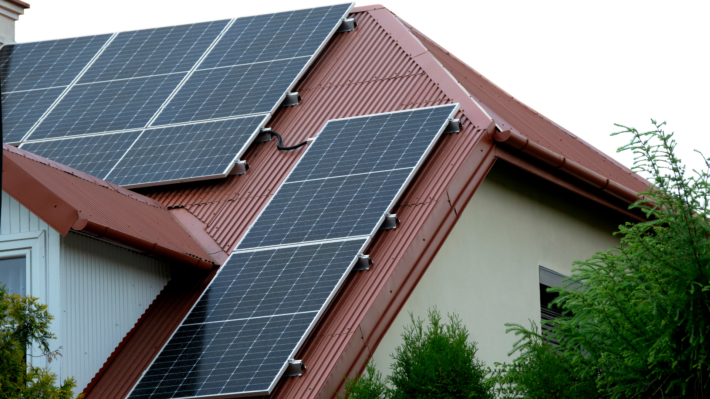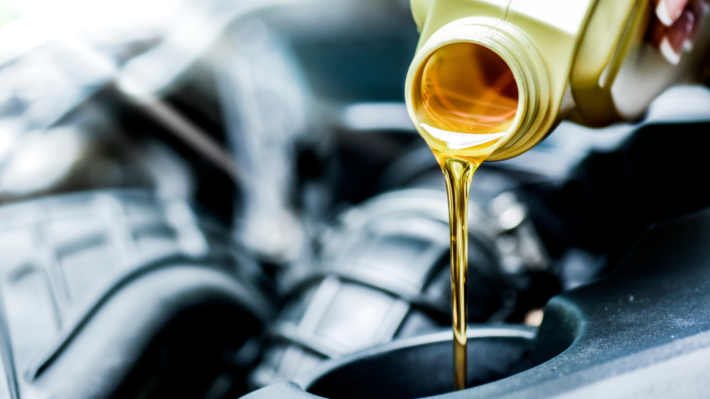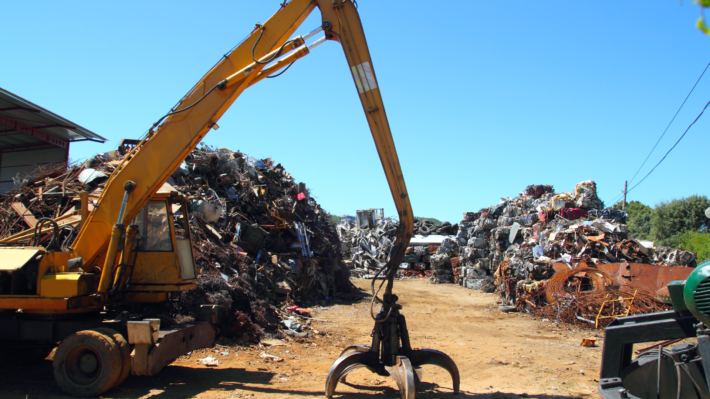Transforming Plastic Waste into New Products: The Journey of Plastic Recycling Explained

Welcome, cherished readers, to yet another brilliant exploration of a topic that concerns us all: Plastic Recycling! Look around you, plastics are virtually everywhere. But what happens when they’ve served their purpose? That’s where our journey begins, from your curbside collection to that sorting plant down the road, all the way through the fascinating processes of mechanical or chemical recycling. This incredible chain holds the potential to transform plastic waste into new, useful products, a ray of hope in mitigating the grim issue of plastic pollution.
Some may see it as an insurmountable challenge, but we, the eternal optimists, see it as a vibrant tapestry of opportunities waiting to be unraveled. Buckle up, brave eco-warriors, as we dive deep into the intricacies of plastic recycling – its market, its challenges, and its undeniable impact, and most importantly, its pivotal role in preserving our beloved planet for generations to come.
Understanding Plastic Recycling
Have you ever wondered what happens to the plastic bottle you just tossed into the recycling bin? Well, I’m here to tell you: it’s a part of an incredible journey of transformation and rebirth–a journey called ‘Plastic Recycling.’
The Importance of Plastic Recycling
Plastic waste litters our beautiful planet, threatening marine life, overflowing landfills, and impacting the environment in ways we’re only just beginning to comprehend. Plastic recycling is our way of fighting back, turning what was once waste into something new and useful.
Reducing Landfill Waste
Recycling plastic keeps it out of our overflowing landfills. For every ton of plastic we recycle, we’re saving space in our landfills for materials that can’t be recycled. Not only that, but it also prevents harmful chemicals and emissions from escaping into our environment when the plastic breaks down.
Conserving Resources
Did you know that producing new plastic from recycled material uses up to two-thirds less energy than making it from raw materials? Talk about a massive energy saver! Plus, recycling plastic reduces our need to drill for new oil, protecting our precious natural resources.
Decreasing Emissions
Lastly, recycling plastic significantly reduces greenhouse gas emissions. How so? Well, when we recycle, we’re avoiding the energy-intensive process of creating new plastic. That means less carbon and other harmful gases being released into our atmosphere.
And there you have it– the essence of plastic recycling. It’s all about taking waste and giving it new life, combatting the plastic pollution problem, one bottle at a time.
Collection and Sorting of Plastic Waste
Before we can even begin to talk about recycling, we must understand the process of plastic waste collection and how it is sorted. It’s a complex dance of logistics, machines, and human oversight that gets our discarded plastic from point A to point B. And it’s more important than you may realize.
Curbside Collection
Residential Collection
Let’s begin with the basics: residential collection. When you toss a plastic bottle into your recycling bin, you’re setting off a chain of events that’s been carefully coordinated by your city or town. These programs, known as curbside collection, see specialized trucks rumble through neighborhoods, picking up recyclables and delivering them to the next step in the process. Here is a handy resource to help you understand the kinds of materials that can be recycled in your community.
Commercial Collection
Then we have commercial collection. Businesses generate a significant amount of plastic waste, whether they’re restaurants discarding plastic containers or manufacturers tossing out plastic packaging materials. These entities have their own set of recycling guidelines, often requiring them to separate their recyclables by type.
Challenges in Collection
While these schemes seem simple, there are challenges in collection to consider. One of the biggest hurdles is what we call ‘wishcycling’, or the tendency of well-meaning individuals to toss non-recyclable items in the bin in the hope they can be recycled. This can contaminate entire batches of recyclable materials, causing more harm than good.
Transportation and Sorting
Once the plastics have been collected, they’re transported to Material Recovery Facilities (MRFs). These are high-tech centers that separate and sort recyclables. Trucks unload the mixed recyclables onto conveyor belts that send them through a series of machines and human sorters to separate by type and material.
Material Recovery Facilities (MRFs)
MRFs utilize both automated and manual methods to sort and prepare materials for recycling. They utilize a combination of near-infrared sensors, magnets, screens, and human workers all towards one aim – to prevent contamination and ensure a quality end-product. This link gives you a behind-the-scenes look at an MRF in action!
Methods of Sorting
To get a feel for the complexity of the process, let’s get a closer look at the various methods of sorting. After the larger items are manually removed, machines take over. Magnets pull out metals, while optical sensors identify different types of plastic and air jets separate them. Lastly, manual sorters remove any contaminants that managed to sneak through, resulting in a stream of clean, separated, and ready-to-be-recycled materials.
As you can see, each step, from curbside collection to sorting at the MRF, is essential to transforming your plastic waste into a raw material that can be turned back into useful products. By participating in your local recycling plan, you’re playing a crucial part in reducing waste, conserving resources and embracing a more sustainable future.
Mechanical Recycling Process
Steps in Mechanical Recycling
Shredding and Washing
The first part in the mechanical recycling journey is shredding and washing. It’s comparable to prepping dinner. Picture this; when you’re about to cook dinner, the first thing you’d typically do is clean and chop the ingredients. In mechanical recycling, it’s no different. Plastic waste is first cleaned to get rid of any dirt or non-plastic materials. Then, it’s shredded into small pieces, ready for the next stage. Think of it as dicing an onion into tiny bits to flavor your stew![^1^]
Melting and Pelletizing
Once our ‘ingredients’ are prepared, the next steps are melting and pelletizing. If cooking dinner was our analogy, consider this step as cooking your diced onions until they’re caramelized. The debris-free, small plastic pieces are heated until they melt. This molten plastic is then shaped into tiny pellets, also known as nurdles, which forms the ‘raw material’ that is utilized to create new plastic products[^2^].
Final Products
Finally comes the best part – the final products. These nurdles or plastic pellets are then used to make new plastic items. This might range from plastic bottles to your favorite plastic toys! Here’s a fun fact: nearly any product made of plastic can be made from recycled plastic! It’s saving us resources and helping us cut down on waste[^3^].
Limitations of Mechanical Recycling
However, like all processes, mechanical recycling also has its limitations. One of the main issues is that it can only reuse certain types of plastics, limiting the kinds of waste that can be recycled. Additionally, mechanical recycling often results in a slight downgrade in the quality of the recycled plastic, meaning it can’t be used for all the same purposes as the original material. Moreover, contamination of the recycling stream with non-recyclable or dirty plastic can impede this process[^4^].
Despite these challenges, it’s crucial to remember that plastic recycling, mechanical or otherwise, plays a pivotal role in our battle against plastic pollution. With ongoing innovation and increasing awareness, we can refine these processes and make plastic recycling more effective than ever[^5^].
Looking forward, it’s clear that mechanical recycling is not just a process; it’s a beacon calling us towards a sustainable future. So let’s take heed, and recycle, recycle, recycle!
[^1^]: EPA: Mechanical Recycling [^2^]: ScienceDirect: Plastic Pellets [^3^]: The Balance Small Business: An Overview of Plastic Recycling [^4^]: Waste Management World: Mechanical Recycling Limitations [^5^]: National Geographic: Innovations in Plastic Recycling
Chemical Recycling Techniques
Starting this part, we’ll be talking about a method of recycling that will excite the scientists among us. Welcome to the world of chemical recycling! While mechanical recycling relies on physical processes to transform plastic waste, chemical recycling plays with the building blocks of plastic on a molecular level. In this approach, we don’t just reshape waste; we fundamentally change its chemical structure. Here are the main types of chemical recycling:
Types of Chemical Recycling
Depolymerization
Hang on tight for our first entry, depolymerization. It’s a big word, but all it means is that we’re breaking down the plastic’s polymer chains into their original monomers. Think of a Lego tower (that’s your plastic item) being taken apart into individual Lego blocks (those are your monomers). This process can help us create brand new plastic items without any loss in quality. That’s right, no degradation at all! Imagine turning your old milk jug into a fresh, new one, like it never even experienced life as a used container!
Pyrolysis
Our second type, pyrolysis, takes a bit of heat—quite literally! In this process, plastic waste is heated in the absence of oxygen, breaking it down into a mix of oil, gas, and char. The produced oil can be further refined and used as fuel or as a raw material in plastic production.
Solvent-Based Methods
The third big player in this field is solvent-based methods. These methods involve utilizing solvents to dissolve plastic waste selectively, allowing for easy separation of impurities. Pretty neat, right? This option can handle certain mixed plastic wastes that mechanical recycling couldn’t dream of sorting out.
Shifting our approach from reshaping to rebuilding allows us to recycle more types of plastic and achieve better quality in the final product. But like anything in life, chemical recycling comes with its own set of challenges.
Advantages and Challenges
First, the good news. As we’ve mentioned, the big plus of chemical recycling is that it can break down plastics on a molecular level, virtually eliminating concerns about purity and type. This flexibility makes it a powerful tool in tackling our vast variety of plastic waste.
However, the challenges lie in its complexity and cost implications. Chemical recycling processes often need more refined equipment than mechanical recycling, adding to the cost. Its environmental impact, particularly related to energy use and emissions, also needs to be properly managed.
So, there you have it! Dive deeper into the world of chemical recycling which is brimming with promise, equipped with the strengths and ready for the challenges. This field is still developing, and who knows? You could be part of the next big innovation to refine and boost this essential technology in our fight against plastic waste!
Recycled Products and Market Trends
Did you ever ponder what happens to your plastic waste once it bids goodbye at your curbside? If you are one of those curious minds, then you are in for a treat!
Post-Consumer Recycled Plastics
Post-consumer recycled (PCR) plastics are the real stars in the world of recycled products. PCR plastics are derived from consumer waste that’s been collected, cleaned, and then reprocessed. Think of it: That water bottle you tossed into the recycling bin could turn itself into a snazzy new jacket or a robust park bench! Ain’t that something?
Experts believe that using PCR plastics can significantly reduce our reliance on virgin plastics, aiding in our fight against environmental damage[^1^]. By buying products made from PCR plastics, you are not only participating in economy’s circulatory system but also helping to sabotage the linear ‘take, make, dispose’ model!
Upcycling and Downcycling
Enter the world of upcycling and downcycling. Upcycling transforms waste materials into new products of higher quality or value than the original. An example could be crafting a tote bag from your old denim jeans[^2^].
Downcycling, on the other hand, involves converting materials into new materials of lesser quality. Let’s say, in some cases, downcycling plastic bottles may result in plastic fibres which can be used as insulation or stuffing for teddy bears[^3^].
While both are sustainably sexier alternatives to outright disposal, upcycling takes the cake for being more aligned with the holy grail watchword: ‘Zero Waste’.
Consumer Demand and Corporate Commitments
Consumer demand for recycled products is skyrocketing, and big corporates are listening! Major magic is happening when industry leaders get on the green bandwagon. Sports brands turning waste into footwear, beverage giants pledging to up their PCR content in bottles, retail behemoths committing to phasing out single-use plastics … the list goes on![^4^]
Corporations are now realizing that sustainability is not just a buzzword but a serious customer demand and a vital core of their business strategy.
So, the next time you shop, pick PCR! Small tweaks to your buying habits can make a WORLD of difference. And remember, it’s not just about buying recycled—it’s about closing the loop by recycling, too!
Did you know? The demand for PCR plastic is expected to rise at a compound annual growth rate (CAGR) of 8.5% from 2021 to 2026[^5^].
Happy Recycling, everyone!
[^2^]: What is upcycling? – CNN
[^3^]: Don’t Recycle: Upcycle – Plastic PET bottles into… teddy bears?
[^4^]: Here’s how brands are stepping up to meet demand for recycled plastics
Challenges and Future of Plastic Recycling
Plastic recycling, while extremely beneficial, is not without its share of challenges. Two of the biggest obstacles faced within the realm of plastic recycling include contamination issues and economic viability.
Overcoming Contamination Issues
Contamination is a thorn in the side of plastic recycling efforts. This stubborn obstacle often appears in the form of non-recyclable materials mixed in with recyclable ones, dirty plastics that haven’t been correctly cleaned, or different types of plastics combined together. This makes the recycling process more difficult and can compromise the quality of the recycled material, limiting its reuse possibilities.
However, there are initiatives underway to tackle this problem. For starters, education is critical. By enlightening the general public about what can and can’t be recycled and the importance of cleaning items before tossing them in the recycling bin, the amount of contamination can be significantly decreased. High-tech solutions, such as smart bins that automatically sort recyclables from non-recyclables, can also help in this battle against contamination.
Economic Viability
The truth of the matter is, recycling plastics is expensive. From collecting and sorting waste to the actual cost of recycling, the expenses quickly add up. Furthermore, when you factor in the competition recycled plastic faces from virgin plastic, which is often cheaper due to the low cost of crude oil, it’s clear that making plastic recycling financially feasible is a major hurdle to overcome.
In order to make plastic recycling more economically viable, we need to implement legislative measures, such as incentives that reward recycling efforts and penalties for excessive plastic waste production. Also, making recycling facilities more efficient and less expensive to operate can contribute to reducing costs.
Future Innovations in Recycling
Advanced Technologies
The good news is that the future of plastic recycling looks promising, largely due to advancements in technology. One of these revolutionary breakthroughs includes chemical recycling, which can convert plastic waste into its basic molecule components. This allows for a broader range of plastic types to be recycled, including those that were previously unrecyclable via traditional mechanical recycling methods.
Another groundbreaking innovation is the development of biodegradable plastics. These types of plastics contain specific additives that enable them to decompose naturally over time, possibly leading to a potential game-changer in the fight against plastic waste.
Policy and Circular Economy
Moving toward a circular economy, where waste is minimized by making it a part of a closed-loop system, can assure the sustainable future of plastic recycling. This approach requires changes from consumers, businesses, and, importantly, policy makers. Governments, through policy, can foster the transition towards a circular economy by offering incentives to design products that last longer, are easier to repair, and are, ultimately, easier to recycle.
Strides are being made every day to improve plastic recycling efforts, and with continued advancements in technology and an ever-growing public consciousness about the negative impacts of plastic waste, the future looks bright for plastic recycling.
Today’s choices will shape tomorrow’s plastic pollution climate. By understanding the hurdles and potential solutions, we can all play a role in promoting a recycling-friendly environment and preserving our planet.



